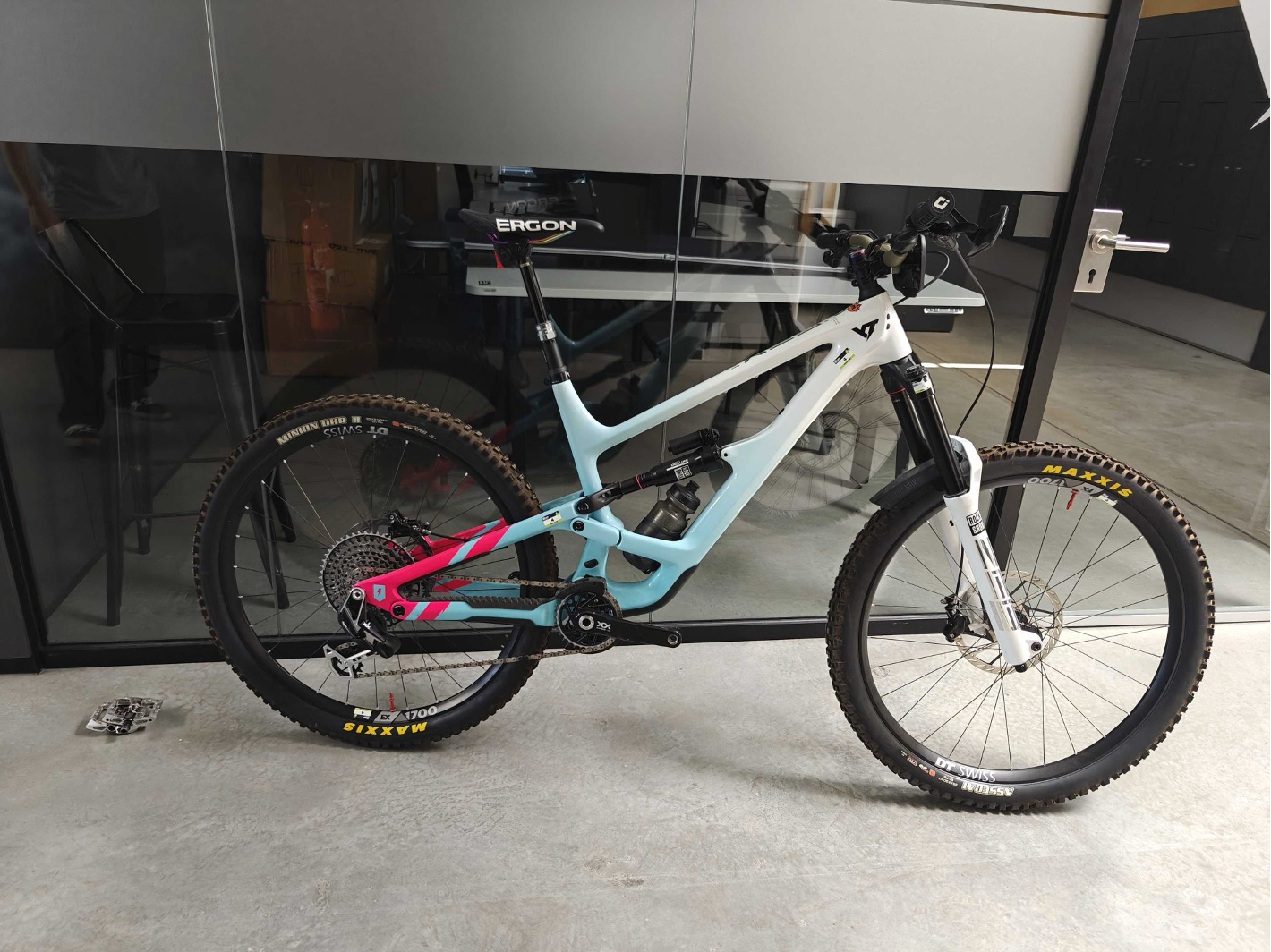Every cyclist has experienced that sinking feeling when something breaks mid-ride. Whether you’re miles from home or just heading to work, having the right spare bike parts can mean the difference between a quick fix and a long walk home. Being prepared isn’t just about convenience—it’s about extending your bike’s lifespan and ensuring your safety on the road or trail.
In this guide, we’ll explore the essential spare bike parts every cyclist should have on hand. Think of these components as your bike’s emergency kit—items that can save your ride when unexpected issues arise. Let’s dive into the world of bike maintenance preparedness and discover how a small investment in spare parts can deliver huge returns in riding confidence.

8 Must-Have Bike Parts for Every Cyclist
Having these essential spare bike parts in your toolkit ensures you’re prepared for common bike issues. Each component serves a specific purpose and knowing when to replace them can prevent bigger problems down the road.
1. Inner Tubes
Inner tubes are the unsung heroes of cycling and the most common spare part you’ll need. Even if you’ve converted to tubeless, carrying a spare tube is like having a backup parachute—you hope you won’t need it, but you’ll be grateful it’s there.
Function: Holds air inside your tire, providing the cushion between you and the road.
Signs of Replacement: Punctures, pinch flats (snake bites), or valve issues. If you hear a hissing sound or your tire deflates quickly, your tube needs replacing.
Pro Tip: Always carry tubes that match your wheel size and valve type (Presta or Schrader). Look for tubes with removable valve cores for easier maintenance. Quality tubes from brands like Continental or Schwalbe might cost a bit more but offer better puncture resistance.
Get Reliable Inner Tubes
Don’t get stranded with a flat! Keep 2-3 spare tubes in your repair kit for quick fixes on the go.
2. Brake Pads
Brake pads are your bike’s primary safety feature. When they wear down, your stopping power diminishes—a dangerous situation in any riding condition. Having spares ready means you’ll never compromise on safety.
Function: Creates friction against the rim or disc to slow and stop your bike.
Signs of Replacement: Squealing brakes, reduced stopping power, or visible wear indicators (grooves or lines that disappear when pads are worn).
Pro Tip: Match your brake pad material to your riding conditions. Organic pads offer better initial bite but wear faster, while sintered metallic pads last longer in wet conditions. Always check compatibility with your specific brake system (rim vs. disc, hydraulic vs. mechanical).
3. Chain Links and Chain Tool
A broken chain can instantly end your ride. Quick links (also called master links or missing links) are small miracles of engineering that allow you to repair a broken chain without specialized tools. Think of them as the bike equivalent of a spare tire—small, lightweight, and absolutely essential.
Function: Allows you to connect a broken chain or remove it for cleaning.
Signs of Replacement: Stiff links, visible rust, or chain breakage during shifting or when applying power.
Pro Tip: Carry quick links that match your chain speed (8/9/10/11/12-speed). Some brands like SRAM and KMC make reusable quick links, while others are single-use only. A compact chain tool on your multi-tool complements quick links perfectly for emergency repairs.
Never Get Stranded with a Broken Chain
Keep a few quick links in your repair kit—they weigh almost nothing but can save your ride!
4. Shift Cables and Housing
Smooth shifting is what separates a good ride from a frustrating one. Cables stretch and fray over time, and housing can crack or become contaminated with dirt and water.
Function: Transfers movement from your shifters to the derailleurs, enabling gear changes.
Signs of Replacement: Sluggish shifting, inability to index properly, visible fraying, or rust on cables.
Pro Tip: Premium cables with slick coatings (like Shimano Optislick or Jagwire Elite) provide noticeably better shifting performance. Pre-cut housing kits save time during installation. Stainless steel cables resist corrosion better than galvanized ones, especially for riders in humid or coastal areas.
5. Brake Cables and Housing
Similar to shift cables, brake cables are critical safety components that wear out over time. Having spares means you can replace them at the first sign of reduced performance rather than waiting until they fail.
Function: Transfers force from brake levers to calipers or mechanical disc brakes.
Signs of Replacement: Spongy brake feel, reduced stopping power, visible fraying, or kinks in the cable.
Pro Tip: Compressionless brake housing provides firmer brake feel, especially for mechanical disc brakes. Always use brake-specific housing for brakes (it’s reinforced differently than shift housing). A quality cable cutter makes clean cuts that improve performance.
6. Derailleur Hanger
This small, replaceable part is designed to bend or break in a crash, saving your expensive derailleur. They’re specific to your bike frame, making them difficult to find on short notice.
Function: Connects your rear derailleur to the frame and is designed to fail first in an impact.
Signs of Replacement: Poor shifting that can’t be adjusted out, visible bending, or derailleur sitting at an odd angle.
Pro Tip: Derailleur hangers are frame-specific—there are hundreds of different designs. Take a photo of yours and measure it before ordering. Some companies like Wheels Manufacturing make universal emergency hangers that can get you home in a pinch.
Protect Your Expensive Derailleur
A spare derailleur hanger is cheap insurance against a ruined ride or expensive repair.
7. Spokes and Nipples
A broken spoke can quickly lead to a wobbly wheel or even complete failure. Carrying a few spares of the correct length can save a ride, especially on longer adventures or bikepacking trips.
Function: Connects the hub to the rim and distributes forces throughout the wheel.
Signs of Replacement: Broken spokes, wheel wobble, or uneven tension when plucking spokes like guitar strings.
Pro Tip: Measure your existing spokes or consult your wheel manufacturer for the correct length. Carry spoke nipples too—they’re tiny and easy to lose. Butted spokes (thinner in the middle) offer better durability than straight-gauge ones for most riding.
8. Tire Boot
A tire boot is an emergency patch for your tire’s casing. When you get a significant cut or tear in your tire (not just the tube), a boot can temporarily reinforce the damaged area to get you home safely.
Function: Reinforces damaged tire casings to prevent tubes from bulging through cuts or tears.
Signs of Replacement: Visible cuts in tire casing, bulging tubes, or repeated flats in the same location.
Pro Tip: Commercial tire boots like Park Tool’s TB-2 work best, but in a pinch, a folded dollar bill, energy gel packet, or piece of Tyvek can work as an emergency boot. For larger cuts, carry a needle and strong thread to stitch the tire before applying the boot.
Essential Maintenance Tools to Complement Your Spare Parts
Having the right spare bike parts is only half the equation—you also need the proper tools to install them. These compact tools make on-the-go repairs possible.
1. Multi-Tool with Chain Breaker
A good multi-tool is like a Swiss Army knife for cyclists. Look for one with 2-8mm hex keys, Torx bits, screwdrivers, and most importantly, a chain tool. Brands like Crank Brothers, Topeak, and Park Tool make reliable options that balance functionality with compact size.
One Tool for Almost Every Repair
A quality multi-tool is an investment in self-sufficiency on the road or trail.
2. Tire Levers
These simple plastic tools make removing and installing tires much easier. Look for durable nylon levers that won’t damage your rims. Some even feature built-in spoke wrenches for added functionality.
3. Mini Pump or CO2 Inflator
After fixing a flat, you need to inflate your tire. Mini pumps are reliable but require effort, while CO2 inflators are fast but limited by cartridge supply. Many cyclists carry both for flexibility.
4. Spoke Wrench
If you carry spare spokes, a spoke wrench lets you true your wheel enough to continue riding. Look for one that matches your spoke nipple size (typically 3.23mm, 3.30mm, or 3.45mm).
5. Valve Core Tool
This tiny tool allows you to remove valve cores for adding sealant, clearing clogs, or replacing damaged cores. Some also include integrated valve core storage—a thoughtful feature for the prepared cyclist.
Smart Storage Solutions for Your Bike Spare Parts
Having the right bike parts is important, but organizing them efficiently ensures you can find what you need when you need it—both at home and on rides.
On-Bike Storage
For essentials you need on every ride, consider these storage options:
Saddle Bag: The classic choice for road cyclists. Look for one with waterproof zippers and enough capacity for tubes, levers, and a multi-tool.
Tool Bottle: A water bottle-shaped container that fits in your cage but holds tools instead of water. Perfect if you don’t like the look of saddle bags.
Frame Bags: These attach within your frame’s triangle and offer more storage without affecting handling.
Handlebar Bags: Growing in popularity, these offer easy access and can hold snacks alongside repair essentials.
“The best bike repair kit is the one you actually have with you when you need it. Choose a storage solution that you’ll consistently use.”
DIY Storage Hacks
Try these clever storage solutions to keep your spare parts organized:
Old Tubes as Organizers: Cut sections of old inner tubes to create elastic bands for bundling tools or securing items to your frame.
Pill Bottles for Small Parts: Clean prescription bottles are perfect for storing chain links, valve cores, and other tiny components.
Tool Roll from Denim: Repurpose old jeans into a durable tool roll with custom pockets for each tool.
Altoids Tin Repair Kit: These small metal tins can hold a surprising amount of emergency repair items.
Home Workshop Organization
Keep your home supply of spare parts organized with these systems:
Clear Bins with Labels: Categorize parts by type and use clear containers so you can see contents at a glance.
Pegboard System: Hang frequently used tools and parts on a workshop pegboard for easy access.
Drawer Organizers: Small compartmentalized trays keep tiny parts from getting lost.
Digital Inventory: For the ultra-organized, keep a spreadsheet of parts, sizes, and quantities so you know when to restock.
Be Prepared, Ride Confidently
Carrying the right spare parts is like having an insurance policy for your rides. While it might seem like extra weight or unnecessary preparation, experienced cyclists know that being prepared isn’t optional—it’s essential. A small selection of spare parts can mean the difference between a minor inconvenience and a ride-ending disaster.
Remember that bike maintenance is an ongoing process, not a one-time event. Regularly check your spare parts kit to ensure everything is in good condition and ready when needed. Replace items you’ve used and periodically inspect components like tubes for dry rot or damage.
Like a scout who’s always prepared, a cyclist with the right spare parts can handle most common mechanical issues and keep rolling. Your future self will thank you for the small investment in preparedness you make today.
Start Building Your Bike Repair Kit Today
Don’t wait until you’re stranded to wish you had the right spare parts. Get prepared now!
“The chain is only as strong as its weakest link—and with a spare link in your pocket, even that won’t stop you for long.”




